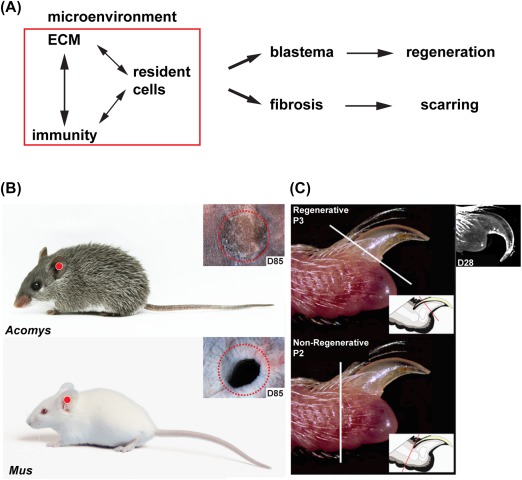Figure 2.

The injury microenvironment differentially regulates healing outcomes in mammalian models of regeneration and fibrotic repair. (A): The composition of the local microenvironment is determined by crosstalk among the ECM, cells of the immune system, and resident tissue progenitor cells. Comparative studies suggest a pro‐regenerative microenvironment stimulates blastema formation in lieu of fibrosis. Combinatorial therapies that target these three facets could dictate the future of regenerative medicine. Comparative models of natural regeneration and fibrotic repair include a 4‐mm ear punch assay (B) and digit tip amputations (C). These models inform how the local tissue environment functions during both tissue repair processes. (B) A 4‐mm biopsy punch through the external ear pinna of the African spiny mouse (Acomys) results in epimorphic regeneration, whereas the same injury through the ear pinna of outbred lab mice (Mus) results in a scar. (C) Amputation of the third phalangeal element (P3) results in epimorphic regeneration, whereas amputation through the second phalangeal element (P2) results in scar formation. Image in (C) adapted with permission from 43. Abbreviation: ECM, extracellular matrix.
